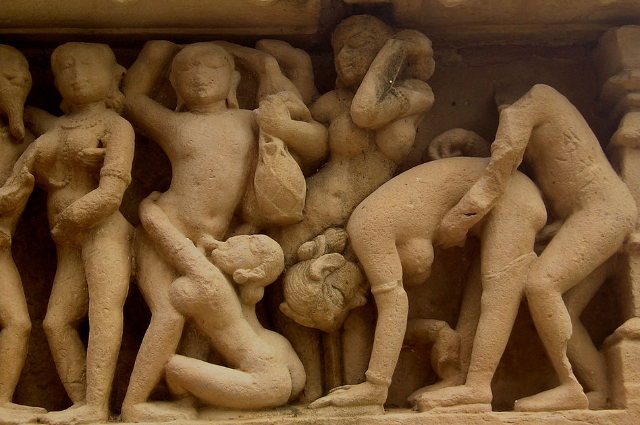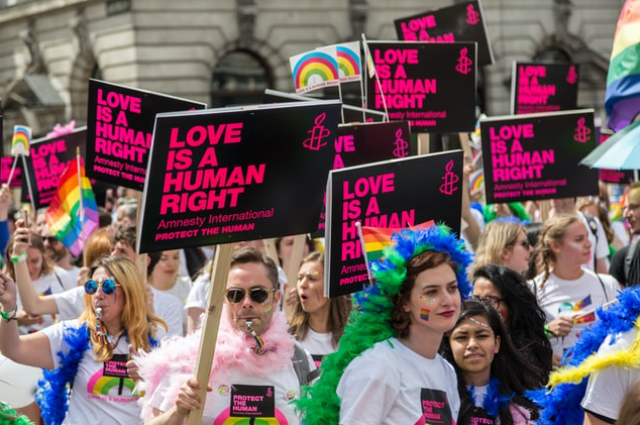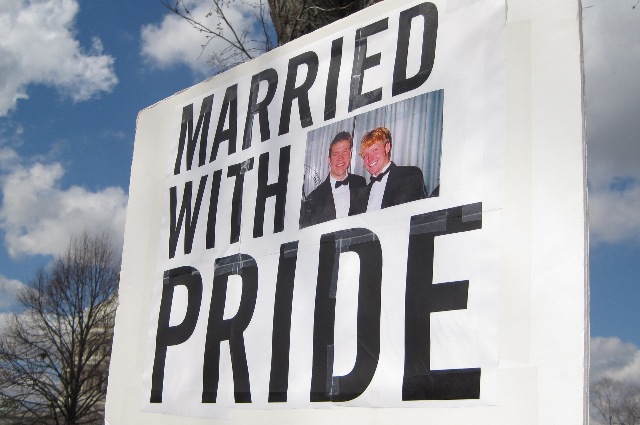In the words of Harvey Milk, the first openly gay elected official in the history of California, "It takes no compromise to give people their rights. It takes no money to respect the individual. It takes no political deal to give people freedom. It takes no survey to remove repression."
Over the years, the LGBTQIA+ Community has struggled for acceptance, not just in the Indian society, but also globally. Even though more favourable conditions now prevail in some parts of the world, homosexuality is still recognized as a crime and a reason for persecution in Middle-eastern nations like Iran.

In a scenario like this, how does India view homosexuality and same-sex unions? Same-sex marriages are still not legally recognized in India, even after the decriminalization of homosexuality. Let us try to delve deep into the roots of this law and understand how it affects the society and future of the nation.
THE HISTORY OF HOMOSEXUALITY IN INDIA
Homosexuality in India has been a topic of intense debate and deliberation, with different groups and organizations proposing various theories to prove its recognition or denial in ancient times.
An indication of the recognition of homosexual dimensions of human life is found in the Rigveda, which states, “Vikriti Evam Prakiti”, meaning, what seems unnatural is also natural. Scholars have used this phrase as evidence to prove that homosexuality was considered to be natural and has even been recognized by sacred Hindu scriptures. The sculptures at the Khajuraho temple of Madhya Pradesh are also seen as visual proofs of the depiction and acceptance of gender fluidity around 12th century India.

On the other hand, some strongly believe homosexuality to be a Western concept, invalid and non-prevalent in ancient India. According to them, it is worthy of being condemned owing to its incompatibility with the laws of nature.
This conflict has led to the emergence of two polar opposite schools of thought, who in turn influence the politics, and ultimately the extent of queer rights and laws in India.
LEGAL PERSPECTIVE
Section 377 of the IPC, which criminalized all forms of non-traditional sexual relationships, was enacted during the colonial era by the British Government. However, it took us 70 years to get rid of this despotic law, after almost 2 decades of legal battle.
The early 1990s is seen as the beginning of the LGBTQ Rights Movement, after which several historic judgements finally led to the decriminalization of homosexuality.
The constitutionality of Section 377 was first challenged in 2001, after the Lucknow Police detained a few men on the suspicion of them being homosexuals. After this incident, a petition was filed at the Delhi High Court by the Naz Foundation, challenging the validity and legitimacy of this section of the IPC.
The court ruled in favour of the Foundation, and declared Section 377 to be unconstitutional, as it violated the Fundamental Rights of homosexuals engaging in a consensual relationship.

This decision was overturned by the Supreme Court in 2013, after various individuals and faith-based groups appealed before the Supreme Court to reconsider the constitutionality of Section 377.
Homosexuality was thus re-criminalized, as the Judges in the bench held that LGBT+ persons constituted a ‘minuscule minority’ and therefore did not deserve constitutional protection.
The judgement of the SC faced widespread criticism and backlash, and also gave rise to a new wave of activism in India.
Section 377 was finally scrapped down by the Supreme Court in 2018, when a larger bench again looked into the issue, after a petition had been filed by prominent personalities including hotelier Keshav Suri, Ritu Dalmia and dancer Navtej Singh Johar among many others.
However, same-sex marriages are still not recognized by the law prevailing in India. Is the world’s largest democracy ready for this change? Let’s try to find out.
THE STANCE OF THE CENTRE
Even though the Central Government had left it upon the Supreme Court to decide on the fate of Section 377 in 2018, it is likely to oppose any move to accord legal sanction to same sex marriages in India. Many petitions have been filed for the recognition of same sex marriages under the Special Marriage Act.
Responding to these pleas, the government has stated, “Personal laws recognize only heteronormative marriages. Interference in this would cause havoc. Despite the decriminalization of Section 377 of the Indian Penal Code (IPC), the Petitioners cannot claim a fundamental right for same-sex marriage.”
Other organizations like the Rashtriya Swayamsevak Sangh (RSS) are also opposed to the idea of same sex unions. RSS leader Arun Kumar told the media, “Gay marriage and relationships are not compatible with nature and are not natural, so we do not support these kinds of relationships. Traditionally, India’s society also does not recognize such relations”.
However, recent developments indicate that the RSS has softened its stand on gay marriages. In their new book, ‘The RSS: Roadmaps For The 21st Century’, the author Sunil Ambekar talks about the possibility of discussing the matter of same sex marriages in future. Mr. Ambekar, the organising national secretary of the Akhil Bharatiya Vidyarthi Parishad (ABVP) has said that the organisation was clear that it did not oppose the decriminalization of homosexuality but had reservations about institutionalization of gay marriage. He added that the issue could be discussed in future and is not a closed chapter.
THE MINDSET OF THE MASSES
Homophobia, or the prejudice against individuals belonging to the LGBTQIA+ community is widespread in Indian society, manifesting itself in various forms like discrimination and even violence in some cases. By and large, this is a result of conservatism and the belief that homosexuality is against the laws of nature, thus making it worthy of being opposed. Members of the Queer community are continually subjected to extreme mental, physical and emotional abuse, often in educational institutions and workplace environments.
In a survey conducted by the United Nations Cultural Agency on the 400 LGBT+ youth in India, it was revealed that over 60% of LGBT+ youth faced bullying in middle/high school, and over 33% of them dropped out due to harassment altogether.
Many individuals are forced to conceal their identity due to the fear of discrimination at the workplace and the possibility of losing their jobs. According to the LGBT workplace survey, more than 40% of LGBT people in India have faced harassment at their workplace because of their gender/ sexual identity.
The worst hit is the transgender community. The situation gets even worse in case of transgenders with low levels of literacy and income.
Moreover, the masses are still somewhat apprehensive of inter-caste and inter-class marriages, so the fight for the acceptance of same-sex marriages is likely to be a long one. For the shedding of inhibitions, an individual requires an open mind and exposure to different perspectives. The very idea of homosexuality needs to be normalized in order for the society to embrace same sex unions.
CONCLUSION
The decriminalization of homosexuality is merely a tip of the iceberg, and we as a nation have a long way to go in terms of acceptance and inclusiveness with regard to the Queer section of our society. Sensitization programmes for both the elderly and the young are needed to raise awareness about the LGBTQIA+ community and their struggles. Progressive legislation is the need of the hour, and modification of laws on marriage, adoption, guardianship, inheritance, educational institutions, employment, healthcare services etc. is necessary.
To say that India is completely prepared for embracing same-sex marriages is incorrect, but at the same time, there is no denying the fact that we are moving towards the right direction, and that there is an abundance of hope for a better and brighter tomorrow.

